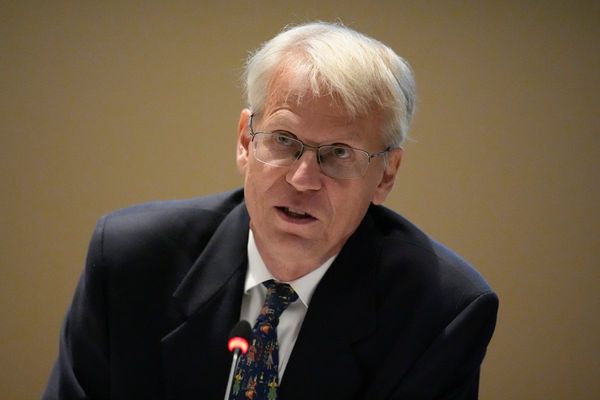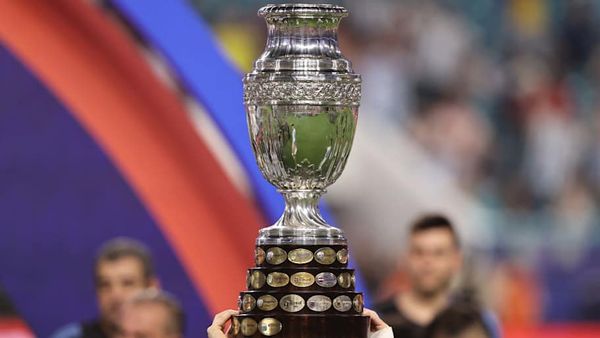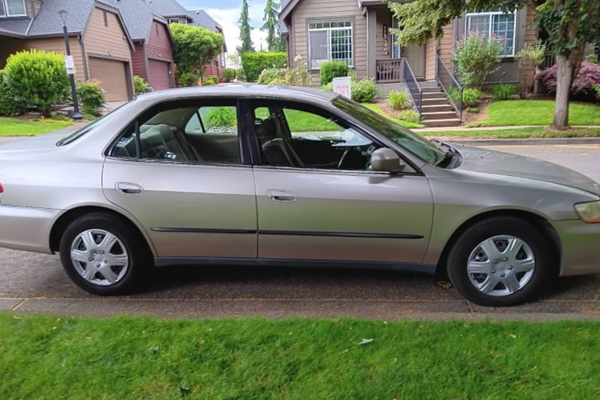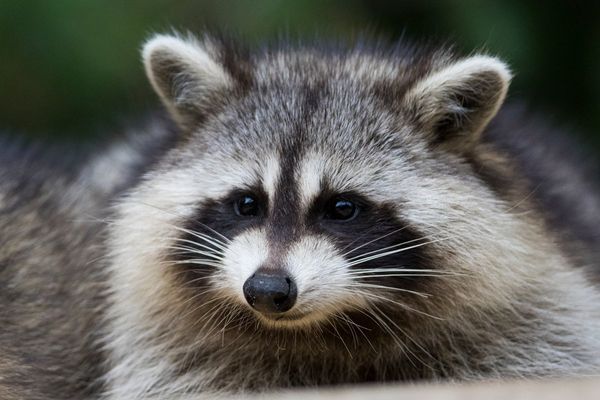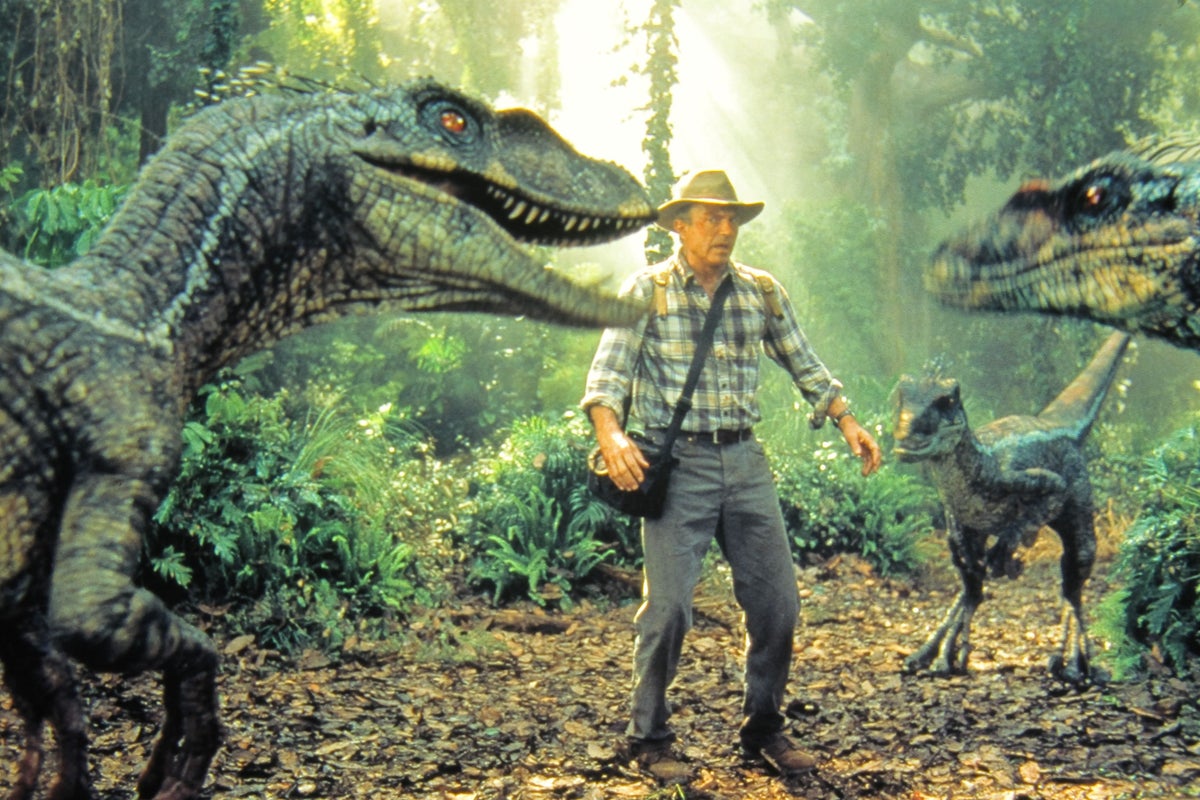
As Jurassic World Rebirth stomps into cinemas, it’s worth remembering a rule so rock solid that it should be cast in amber: as with Steven Spielberg’s original Jurassic Park (1993), the best films in the franchise stay on an island.
That’s one of the reasons Spielberg’s own sequel, The Lost World (1997), was a monster disappointment – taking the T rex from the “site B” island, Isla Sorna, and into the streets of San Diego proved a deeply silly business. It’s also why the Joe Johnston-directed Jurassic Park III (2001) is still the best, bitiest sequel – a 90-minute romp that has the feel of an old-timey cliffhanger serial. Drop onto the island, have a dinosaur adventure, and escape again.
Indeed, in contrast to The Lost World and the Jurassic World reboot films, JP III is relatively low-key. In the story, a wealthy thrill-seeking couple, the Kirbys (William H Macy and Téa Leoni) persuade OG Jurassic Park hero Dr Alan Grant (Sam Neill) – the reluctant Indiana Jones of palaeontology – to act as guide on a dino-spotting flight over Isla Sorna. But, despite Grant’s warning, the plane lands on the island, where it's revealed that the Kirbys aren’t wealthy thrill-seekers after all. Rather, they’re bickering divorcees searching for their 12-year-old son, Eric (Trevor Morgan), lost on the island following a parasailing accident. Grant has been unwittingly roped into a rescue mission for the youngster. “Either way, you probably won’t get off this island alive,” Grant tells them, with that devilish Sam Neill grin.
JP III may be a smaller-scale sequel but it co-stars the series’ heftiest dino by that point: a 14-metre-long, 11-tonne Spinosaurus, the biggest animatronic monster ever made for a movie. “I remember hearing the brief,” says special effects supervisor John Rosengrant. “I don’t know if it came from Joe Johnston or Steven Spielberg, but the idea was to come up with a dinosaur that was bigger and badder than the T rex.”
The Spinosaurus, with its crocodilian snout and menacing fin-like sail, also stands as a monument to practical effects-led blockbusters – its kind soon went extinct. “It was the last of the big animatronic dinosaurs,” says Rosengrant.
Johnston had actually wanted to direct Jurassic Park 2 – before it had a name and before Spielberg decided to do it himself – and later admitted being “fascinated by dinosaurs since I was about six”. (But hey, who wasn’t?) Johnston, who also directed Honey, I Shrunk the Kids (1989) and Jumanji (1995), got his turn when Spielberg stepped down for the threequel, though Spielberg served as executive producer and remained actively involved.
Part of the fun of JP lore, of course, is all the sequel ideas that never made it to the big screen. Michael Crichton, author of the original Jurassic Park novel, was initially announced as the writer of JP III but passed. Spielberg then suggested a story with Grant living on the island Robinson Crusoe-style, studying the dinos. Another version, drafted by Australian filmmaker Craig Rosenberg, had a plane full of teenagers crashing on Isla Sorna (“It read like a bad episode of Friends,” Johnston later said). And Peter Buchman wrote a version called Jurassic Park: Extinction, which had a parallel story about a murder mystery on mainland Costa Rica (spoiler alert: the Pteranodons did it).
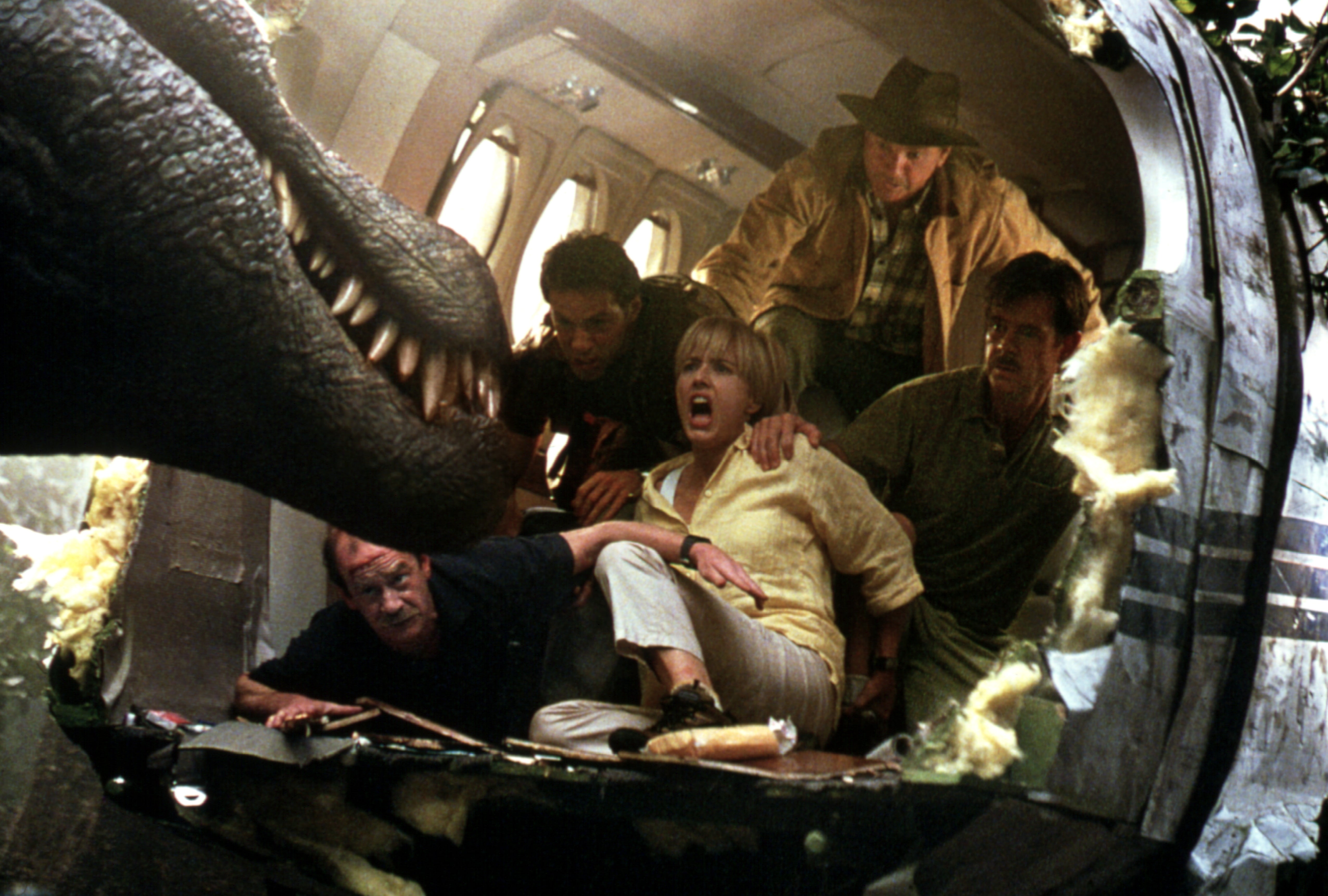
Preproduction roared ahead with Buchman’s idea but Spielberg halted it with five weeks to go, and David Koepp, screenwriter of the first JP, suggested the rescue mission story. The unlikely duo of Alexander Payne and Jim Taylor (the director-writer combo behind Election and Sideways) did rewrites.
With work having begun on sets and effects for Buchman’s version, set-pieces had to be retained. Still, JP III went into production without a finished script or a final act, which caused Johnston numerous headaches during the initial shoot in Hawaii. “I feel like jumping in that ocean and swimming back to America,” he told producer Larry Franco. Buchman was then drafted back in for on-the-fly rewrites.
What was certain was the need for a “bigger, badder” dino. They toyed with the idea of the similarly snouted Baryonyx before settling on Spinosaurus. “I remember all the dinosaurs had to get approved by Steven Spielberg,” says Rosengrant. “Both Steven and Joe would come over and look at the maquettes [smaller test models] to see the size comparison between the T rex and Spinosaur.”
Relatively little was known about Spinosaurus at the time of JP III, but it’s believed to be a semi-aquatic fish-eater (hence the crocodilian snout). As always in these films, there’s a liberal dose of dinosaur creative licence. Few JP fans have overcome the realisation that real Velociraptors were turkey-sized irritants, rather than the 6ft brainbox monsters (“Clever girl”) seen in the movies.
The Spinosaur beat the hell out of the T rex
The movie Spinosaurus, built over eight months by the legendary Stan Winston’s team, was an evolution of the animatronic T rex from the previous films. A full-body recreation from the hindquarters, it ran along a rail track and used “hot-rod” hydraulics for fast, powerful actions. It was a dangerous beast, exerting 1,000 horsepower. As special effects character creator Trevor Hensley later recalled: “You know that one wrong move with your controller, and you could knock somebody 20 feet in the air. It’s no joke – this thing could kill somebody, and, as one of the operators, that makes you very nervous.”
The animatronic was only missing the tail and legs, which were added by CGI. Rosengrant explains that JP III was one of the first films to use hybrid practical and CGI effects shots.
Unlike the original Jurassic Park, which builds for an hour before revealing the Tyrannosaurus, there’s little waiting around for the Spino. It takes just 21 minutes for it to fully emerge from the jungle and eat a couple of disposable characters. The Spinosaurus then swiftly marks its territory by going one-on-one with a T rex and snapping its neck – a bold statement. Weirdly, it happened for real when the crew put the Spinosaurus animatronic up against a more delicate T rex, carried over from The Lost World. The much more powerful Spino model effectively ripped the T rex’s head off. “The Spinosaur beat the hell out of the T rex,” recalls Rosengrant, laughing. “I think it was the last day of filming. Joe said, ‘Let’s have these animatronics just go at each other!’”
Broken neck or not, the T rex will forever be the most iconic dinosaur. But in JP terms, the Spinosaurus is a top-ranking toothy villain – a distinctive, sinister presence. “It’s creepy, kind of scary looking,” says Rosengrant. “It’s all teeth!”
In one menacing moment, the Spinosaurus watches our heroes from across a paddock, like it can’t believe the brass neck of them just walking around in broad daylight. It has a humorous side, too – after swallowing a satellite phone it makes its presence known with the chirping of a now-archaic ringtone, a nod to the ticking crocodile in Peter Pan.
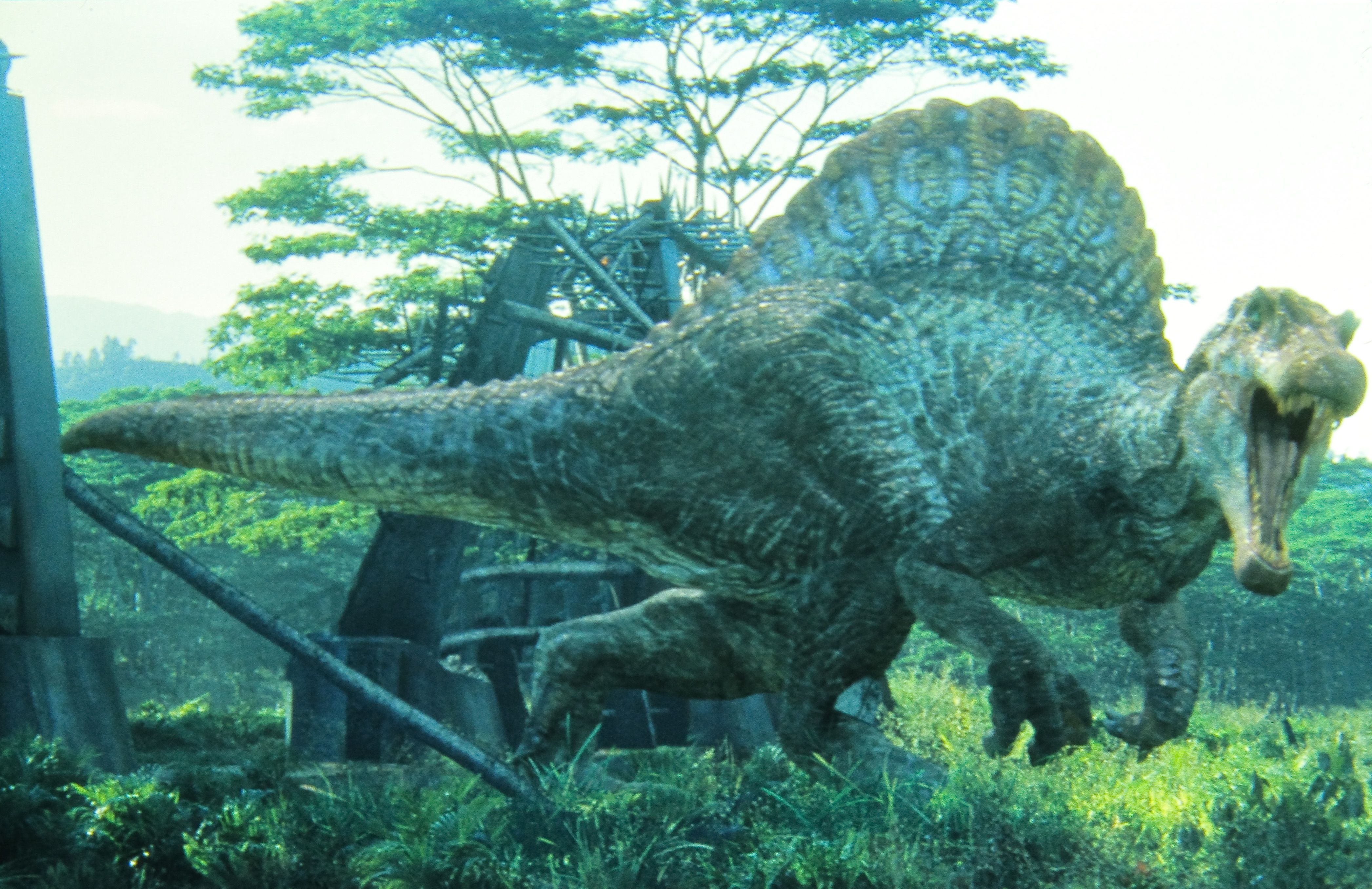
Rosengrant looks back with particular fondness at the Spinosaurus’s signature set-piece – terrorising Grant and the gang on a boat, and trying to fish them out of the river with its jaws – which saw the animatronic splash around for real in the Universal Studios lake. “The Spinosaur in the water was truly incredible,” he says. “It was moving the water around with well over 1,000 horsepower… just incredible.”
Not everything works in JP III. The film’s talking Velociraptors teeter on the ridiculous. Grant theorises that they have a sort of raptor-y language – “My god, he’s calling for help,” Grant says, cheesily, as a raptor honks in distress – and he dreams about a raptor calling him by his name. “I’m afraid the speaking raptor was my idea,” Johnston later admitted.
The raptors – sporting an upgraded design with quill hairdos – play a supporting villain role. They hunt down the gang because one of their number, cavalier palaeontologist Billy (Alessandro Nivola), has stolen some raptor eggs, which is asking for trouble. Will these people never learn?
Far more frightening than JP III’s raptors are the Pteranodons, which come stalking out of the fog when our heroes find themselves in a giant aviary, complete with big lumps of chalky droppings. The hooked angles of their wings look like a pair of Grim Reaper scythes.
The sequence is taken from a chapter in the Crichton novel, in which Grant is attacked by Cearadactylus. Spielberg dropped it from the first movie and later planned a Lost World sequence with Pteranodons attacking a hang-gliding Jeff Goldblum. Finally making it to the big screen, the Pteranodons are largely CGI, which hasn’t entirely stood the test of time, but there are fleeting glimpses of practical Pteranodon models – beady-eyed, calculating grotesques. The sequence – including a parachute escape – encapsulates the boys’ own spirit of JP III, jumping from one dinosaur escape set-piece to the next.
Jurassic Park III premiered in the US on 16 July 2001. The reviews were mixed and while it made $369m from a $93m budget, it was the lowest grossing entry so far – to be expected of a threequel at that time. Attempts at Jurassic Park IV never quite hatched.
The “bigger, badder” mantra – also the nature of continuing sequels – set a problematic precedent. The Jurassic World reboot films, wanting to up the ante each time, have resorted to mucking around with the dino DNA to create mutant hybrid dino-monsters (so preoccupied with whether or not they could, they didn’t stop to think if they should). Sorry, but the fictional Indominus rex and Indoraptor – as well as Jurassic World Rebirth’s lump-headed D rex – are no substitute for a proper Tyrannosaurus rex or Spinosaurus.
Indeed, the DNA of Jurassic Park III is made of purer stuff. It’s a B-movie blockbuster – and worth digging up for another look.
‘Jurassic World Rebirth’ is out now in cinemas
